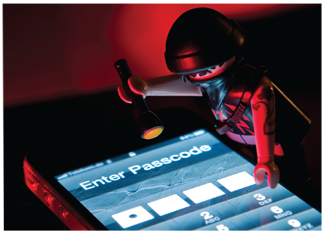 Phone and Internet availability, while vastly increasing the speed of communication in the business world, is not without its own particular risk. FC&S® frequently receives questions about coverage for financial loss arising from these modes of communication, such as the following:
Phone and Internet availability, while vastly increasing the speed of communication in the business world, is not without its own particular risk. FC&S® frequently receives questions about coverage for financial loss arising from these modes of communication, such as the following:
My insured has two T-1 lines for phone and Internet communications. His normal phone bill for these are about $8,000 to $10,000 per month. The system was hacked into by unknown parties, and a monthly bill in excess of $100,000 was generated during that month. Where would coverage fall for a claim of this nature?
Absent a special type of coverage for this type of loss, I doubt that coverage can be found for this loss on either the typical crime or commercial property policies.
Recommended For You
Want to continue reading?
Become a Free PropertyCasualty360 Digital Reader
Your access to unlimited PropertyCasualty360 content isn’t changing.
Once you are an ALM digital member, you’ll receive:
- Breaking insurance news and analysis, on-site and via our newsletters and custom alerts
- Weekly Insurance Speak podcast featuring exclusive interviews with industry leaders
- Educational webcasts, white papers, and ebooks from industry thought leaders
- Critical converage of the employee benefits and financial advisory markets on our other ALM sites, BenefitsPRO and ThinkAdvisor
Already have an account? Sign In Now
© 2025 ALM Global, LLC, All Rights Reserved. Request academic re-use from www.copyright.com. All other uses, submit a request to [email protected]. For more information visit Asset & Logo Licensing.








